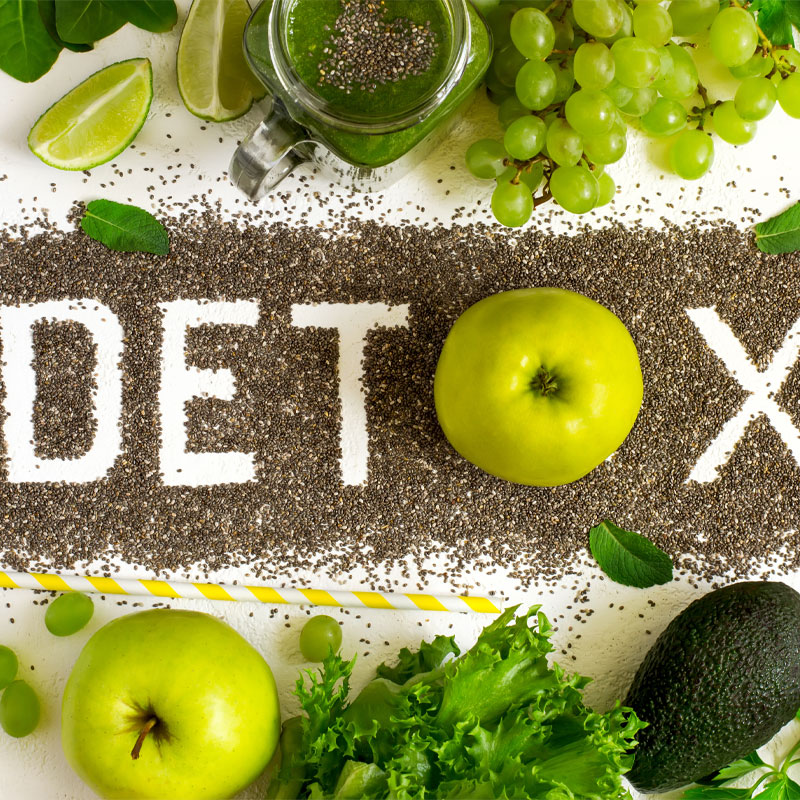
Although it seems straightforward, “whole foods” can be misleading today. Some staples you might have long considered good for you might not be as healthy as imagined, but getting creative can lead to finding new favorites. Here’s a quick overview of Whole Foods 101 and how they can improve your diet.
What Are Whole Foods and the Whole Food Diet?
Whole foods are foods that resemble their natural forms. It’s easier to see what they are through examples.
Whole foods include things like:
- Beans
- Nuts
- Apples
- Broccoli
- Bagged salad greens without dressing
- Canned tuna or chicken in water
- Fish and seafood
Whole foods are not:
- Prepackaged convenience foods
- Mass-produced baked goods
- Snack foods like chips and pretzels
Processed Versus Ultra-Processed Foods
Here’s where the confusion begins. After all, a potato chip roughly resembles a slice of cooked tuber, if a bit warped and crinkly-edged. You process nearly every food you eat by chopping, removing the peel or seeds, cooking, or mixing it with another ingredient. The difference is the degree. While you may process whole foods, they are not ultra-processed.
Many of the meals on store shelves today are ultra-processed. The manufacturers use ingredients extracted from foods such as starches, fats, or flavorings. These are in no way substitutes for the real deal. For example, garlic contains roughly 2,306 known compounds that interact synergistically to produce healing effects. Isolating a few of them as”flavoring” won’t yield the same health benefits.
The problem is that this processing can render a traditionally healthy food much less beneficial—for example, bread. Your typical home-baked loaf contains only whole-grain flour, water, and perhaps some seeds. However, manufacturers may make a loaf of bread with ultra-processed flour from which they remove all the nutritious bran and chaff. The remaining sugary stuff gets a bleach bath, so it stays fresher when sliced.
The result? The same sandwich has much less nutritional value and is akin to stacking your fixings between two slices of sugar. If you tuck in some ultra-processed bologna, what could be a healthy lunch becomes a recipe for diet disaster. The lack of natural fiber makes you hungry for more calories, especially when paired with the necessary vitamins and minerals shortage.
Your body feels the effects of a diet high in ultra-processed food. Not eating enough whole foods leaves you nutritionally deprived, and taking a vitamin isn’t enough. You’ll have less energy, get constipated more often, and struggle with concentration and focus. Over time, such a meal plan significantly increases your disease risk.
How Do I Know If a Food Is Ultra-Processed?
It can be challenging to distinguish between ultra-processed food and whole foods. Ask yourself these questions to determine whether your meal consists of whole foods.
What’s on the ingredient label? Most whole foods, like nuts or bagged salad greens, have only two or three ingredients. Some, like apples, need no labels at all.
Would this item have appeared on menus 150 years ago? Industrialized food production only began in the 1800s. If the ingredient is a word you cannot pronounce, it’s not a natural, whole food.
Can I find it in nature? You can harvest an orange or walnut. Cheetos don’t grow on trees.

Benefits of a Whole Foods Diet
Many people turn to ultra-processed convenience foods to save time. However, anything worth doing is worth doing right; this rule applies to diet. Preparing whole foods need not be as burdensome as you think, and they provide the following impressive benefits.
1. Reduced Risk of Chronic Disease
Chronic diseases such as type 2 diabetes have reached new levels in America. Caring for yourself when you don’t have your health isn’t easy, as the system ties your insurance to your employment, creating quite a predicament if you become too ill to work. According to a Commonwealth Fund study, only 62% of adults feel confident in their ability to afford health care, and taking a proactive approach is far better than the struggles accompanying disease.
Whole foods reduce your risk of chronic diseases in ways science doesn’t yet understand. Remember all the potentially beneficial compounds a single clove of garlic contains? Amplify that with the variety of plants humans evolved to eat, and you begin to see how a supplement can never come close to replacing the real deal. The molecule that prevents cancer from forming in your body might be somewhere in that freshly chopped salad.
2. Ease Gastrointestinal Distress

How many work days have you missed due to an upset stomach? You might have lost count. Gastrointestinal problems can be embarrassing and keep many people out of the office; not everyone can telecommute.
One benefit of a whole foods diet is that it prevents gut dysbiosis by nurturing your microbiome. WWhat’sthat? It’s a funky term for when the colonies of good bacteria in your intestine that help you digest go out of balance. You can rebalance them with whole foods, such as organic produce and legumes, and probiotic foods, such as sauerkraut and kimchi.
3. Treat Your Pearly Whites With Love
Did you know your dental health is closely related to your overall wellness? Scientists have implicated oral bacteria in everything from Alzheimer’s to heart disease. Too much sugar from ultra-processed foods harms teeth, but whole foods protect pearlies. Your mouth also has a microbiome; improving it is only one way whole foods help your smile.
In addition, cruciferous vegetables like broccoli and cauliflower act like toothbrushes to remove debris and bacteria from tooth surfaces while you eat. The same goes for crunchy fruits like apples. Many of these foods also contain enzymes that reduce your risk of fatty liver disease, another adverse effect of consuming too much-added sugar.
4. Cool the Burn
Systemic inflammation is widespread swelling and pain all over your body, a hallmark of chronic disease. Diets high in ultra-processed foods contribute to systemic inflammation by robbing you of complete nutrition. Signs of widespread inflammation include the following:
Whole foods fight systemic inflammation by providing the nutrients your body needs to function at its peak. Fresh fruits, vegetables, nuts, and seeds contain potent antioxidants that protect your cells from damage. The healthy oils in fish and many plant-based foods protect your heart and other vital organs, including your brain. They also check your glucose and insulin levels with a natural balance of sugars and fibers for long-lasting energy.

5. Ward Off Germs
Although the world has mostly moved on from the pandemic, you might be one of many wondering how to boost your immunity, especially during cold and flu season. Whole foods can help. Fresh foods like carrots, sweet potatoes, and dark, leafy greens are high in vitamin A, a potent antioxidant.
Brussels sprouts, broccoli, strawberries, and tomatoes are all great sources of vitamin C, and nuts are powerhouses of zinc, selenium, and magnesium. Both zinc and vitamin C have evidence showing their ability to shorten a cold’s duration, but only if you have plenty of them in your system when symptoms first appear. Eating a whole foods diet ensures you always have sufficient nutrients your body needs because you can’t predict a wayward sneeze.
What to Eat on a Whole Foods Diet
The staples of a whole-foods diet include the following:
- Vegetables
- Fruits
- Whole grains
- Nuts
- Seeds
- Legumes and peas
- Healthy oils
- Lean meats
The trick is to find these ingredients that require minimal processing. Although fresh is best, frozen or canned is also acceptable if the package is free of added salt, sugar, and other additives like coloring or preservatives.
A whole-food diet can test your cooking skills. However, there are ways to make it more manageable, regardless of your budget or lifestyle.
Barriers to a Whole Foods Diet — and How to Leap Over Them
Money and time are the most significant barriers to a whole-food diet. While ultra-processed convenience foods are fast and inexpensive, here are some ways to slash your budget and prep time without sacrificing nutrition and health.
1. Learn to Meal Prep
Meal prep doesn’t mean eating the same thing day after tedious day. Your meal prep might consist of chopping your veggies on your day off and storing them in stay-fresh containers or freezer bags until you grab a handful for the wok or a salad.
You can assemble complete meals in bags, but make a little extra each week. While it takes time, prepping a few additional servings each time you cook will eventually build a freezer full of healthy variety.
2. Make Friends at the Farmer’s Market
Most farmer’s markets have far friendlier prices than your grocery store. Additionally, you can buy organic without the hefty markup — talk to vendors about how they grow their food. You’re also more likely to find markdown deals on slightly nonconforming produce and might cut a deal if you go at days’ end and the market doesn’t open again till the following week. Many sellers will instead part with produce at a discount and then take it home to rot.
3. Grow Your Own
While saving the seeds from your produce doesn’t always work because of hybridization, you can get some bumper crops by breeding those that survive over time. Furthermore, seeds cost little; even urban studio dwellers can put a few tomatoes and beans in pots. A kitchen windowsill herb garden provides fresh fare.
4. Buy In Season
In-season produce is generally less expensive. When there’s more to go around during harvest season, you’ll be able to find better deals. Check out Pinterest for many free In Season tips and guides for your geographic area.
5. Support Community Garden Projects
Unlike ultra-processed snack foods, apples grow on trees — but you need a place to plant them. Supporting community gardens in urban locations brings whole foods to areas that might otherwise lack many such offerings at prices residents can afford.
Whole Foods and Planetary Health
Are you still unsure about adding more whole foods to your diet? Consider this: Processing food requires energy, which these days primarily comes from fossil fuels. This energy use results in emissions.
Therefore, eating whole foods protects your body and planetary health. Furthermore, sourcing most of your food from local farmer’s markets reduces transportation costs and emissions, reducing your footprint.
Whole Foods 101
Whole foods resemble what you would find in nature. They’re much better for you than ultra-processed foods because of their superior nutritional value, and adding more of them to your diet can substantially bolster health.
Use this free guide to get more whole foods in your diet. You might be amazed how a few minor, natural adjustments in your daily intake can improve how you feel.
Written in collaboration with Mia Barnes of Mind + Body Magazine



















